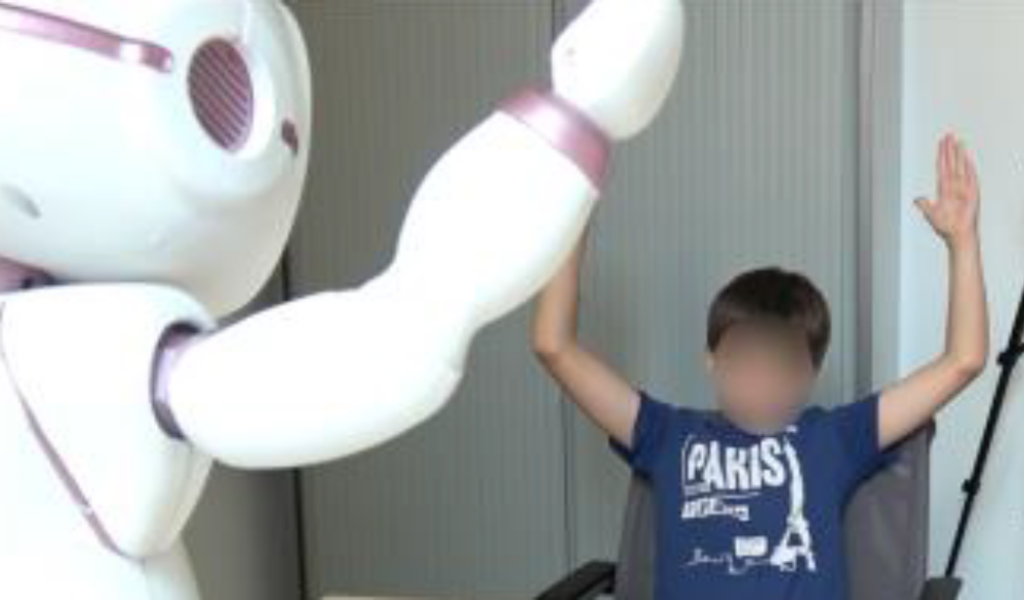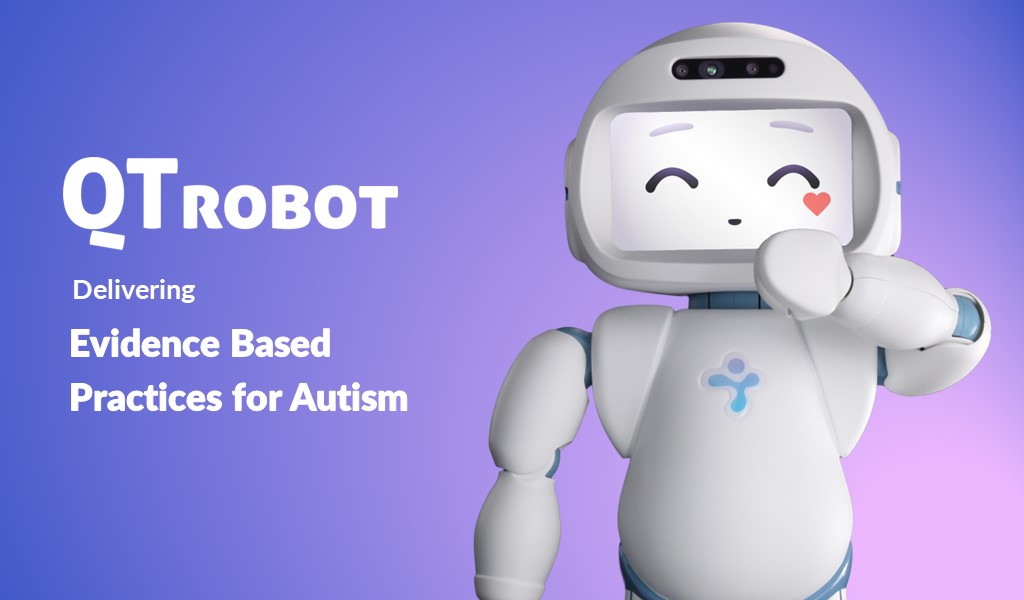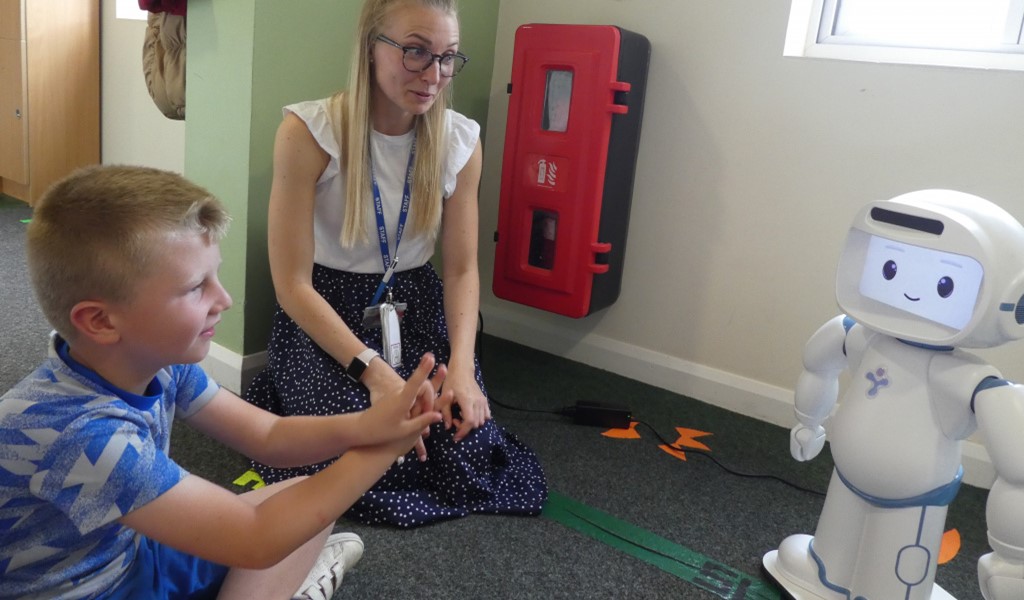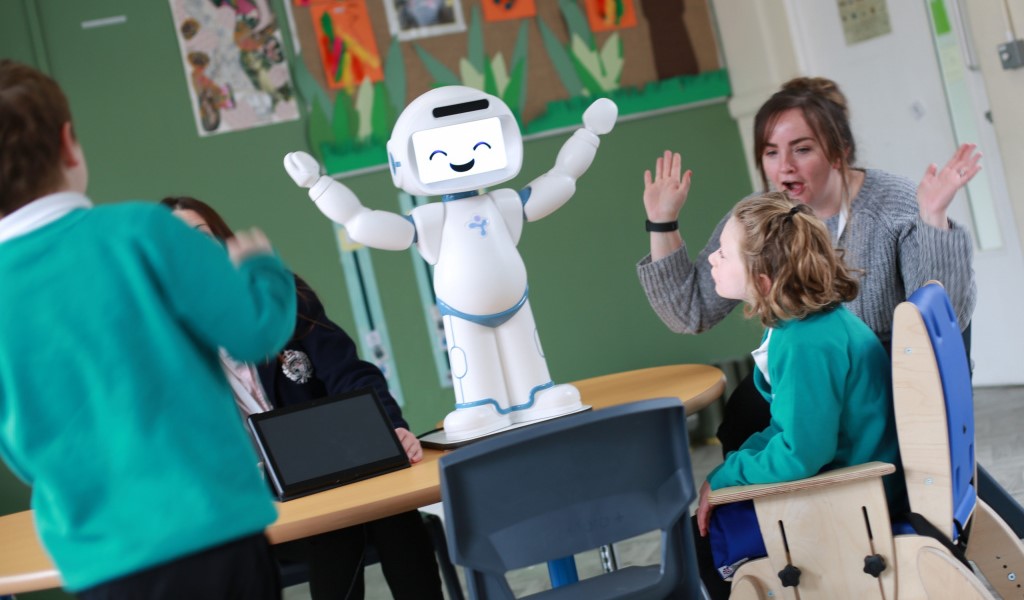Using a robot for teaching new emotional and social skills to children with autism is nothing new. The earliest studies on evaluation of the impact of a robot enhanced intervention for children with autism go back to about 2 decades ago when scientists were searching for new tools to help them to engage children with autism better.
Evaluating The Effectiveness Of The Social Robot In Teaching To Children With Autism:
To evaluate the effectiveness of QTrobot for enhancing the autism training, researchers conducted a study with fifteen children diagnosed with autism spectrum disorder, who were between the age of 4 to 14 years old. In term of the severity, 9 children had severe ASD, 4 children had moderate ASD, 2 of them had mild symptoms. Also, among children, 8 of them had the IQ of below 80, which is considered as co-existing intellectual disability.
In this scientific study, children participated in two short interactions, one with a person and then one with QTrobot.
- Each interview started with the interaction partner asking the child’s name. Then, the person or the robot presented themselves.
Afterwards, they asked three questions from the child about his preferences (e.g. favourite animal, favourite colour, etc.).
Then the interview partner told a short story and asked the child if he liked the story. - To finish, the interview partner asked the child to do an imitation game involving four gestures with the arms (e.g. left arm up, right arm up, left arm to the side, right arm to the side).
- The interviews lasted somewhere around 1.5 to 4.3 minutes.
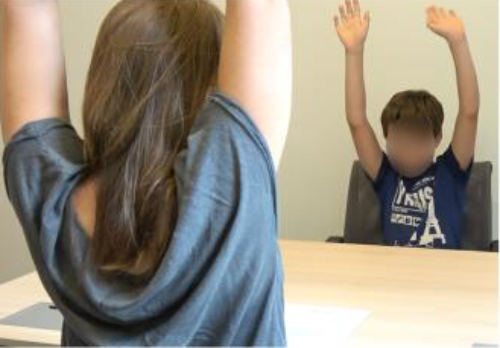
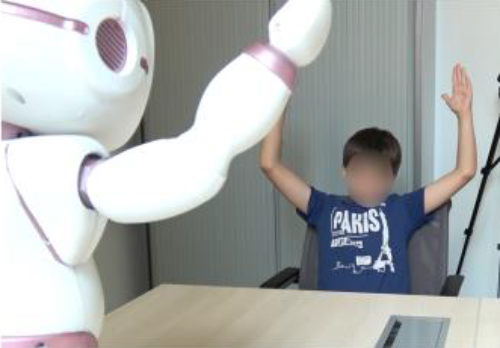
In a research project of the University of Luxembourg, the impact of a robot enhanced intervention for children with autism was evaluated.
Evaluating The Impact Of The Robot Enhanced Intervention For Children With Autism
The videos of the interviews of children were evaluated by two independent observers, assessing:
- Attention and engagement: To assess children’s attention to the interview partner, observers annotated the number of children’s gazes towards the interview partner and the duration of each gaze.
- Anxiety and disruptive behaviours: To assess children’s repetitive and stereotyped behaviours, observers counted the number of chains of repetitive and stereotyped behaviours as well as the number of repetitions per chain. A chain of repetitive and stereotyped behaviours was defined as an uninterrupted sequence of the same type of repetitive and stereotyped behaviour. If the child paused the behaviour to engage in a different behaviour, it was counted as one chain. If the child, after the pause, engaged again in the same or in a different repetitive and stereotyped behaviour, it was counted as a second chain. A behaviour was considered repetitive and stereotyped if the same behaviour occurred at least 3 consecutive times (e.g. hand tapping on the table, rocking back and forth).
1. Impact Of QTrobot On The Attention Of Children With Autism:
Researchers assessed children’s gazes towards the interview partner as indications of children’s attention.
In terms of attention, researchers discovered that children looked significantly longer at the robot than at the human and deviated their gaze less often when they were working with QTrobot. This can indicate that children are more comfortable looking at the robot than looking at the person. This is also confirmed by the fact that, overall, during the entire interaction, children significantly spent a greater proportion of time looking at the robot than looking at the person.
These results are in agreement with the few studies that compared children’s attention towards a robot and towards a person and found that children with ASD directed more attention towards the robot. (1, 2)

Duration of each gaze toward QTrobot vs person
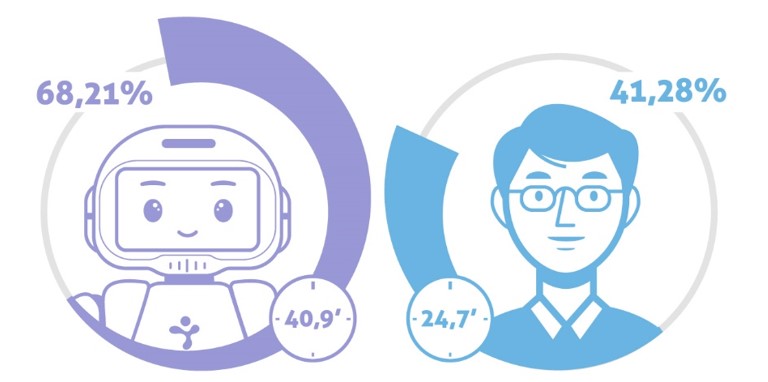
Overall percentage of time looking toward QTrobot vs toward person
2. Impact Of QTrobot On The Repetitive Behaviours Of Children With Autism:
Repetitive or stereotyped behaviours can have detrimental effects in children’s learning and attention and therefore, fewer of these behaviours could enable more opportunities for the child to engage with the teaching partner and learn.
In this study, researchers found that when children were with the robot they engaged in significantly fewer repetitive or stereotyped behaviours and when they did, the frequency of the repeated behaviour was significantly lower than with a person.
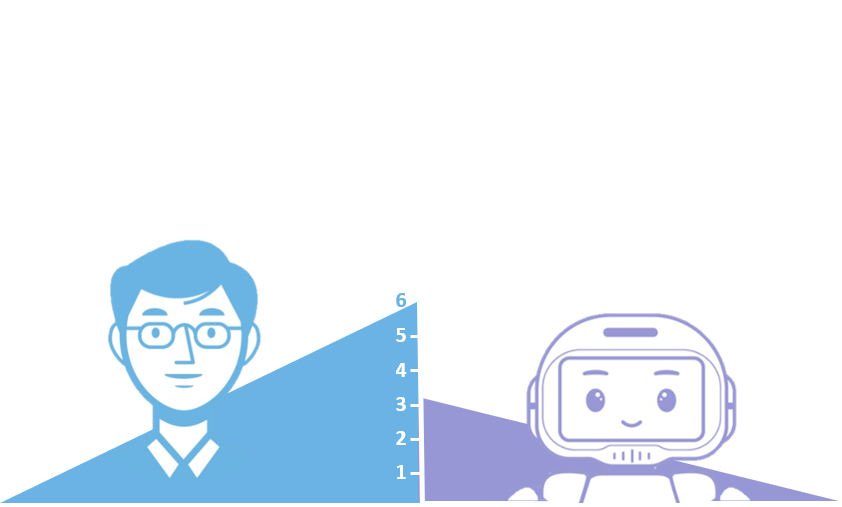
Frequency of stereotypical behaviours per minute
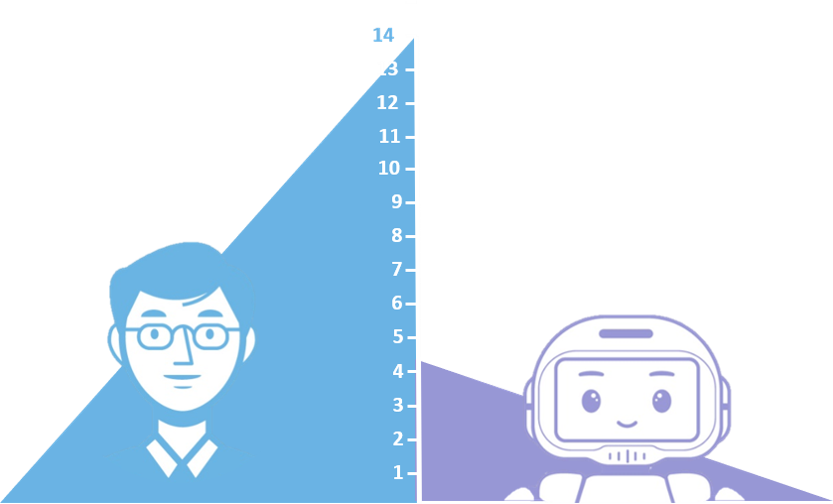
Number of chains of stereotypical behaviours per minute
Conclusion:
In Summary, The Present Results Demonstrate That QTrobot Is An Engaging Robot That Can Be Beneficial To Be Used With Children With ASD.
The fact that children direct more attention towards the robot, imitate the robot as much as they imitate a human, and engage in less repetitive or stereotype behaviours with the robot represents an increased learning opportunity for children with ASD.
References:
1) The study results are published in the Ro-Man 2018 and Human-Robot Interaction Conference 2018.
– A comparison between a person and a robot in the attention, imitation, and repetitive and stereotypical behaviors of children with Autism Spectrum Disorder, A. P. Costa1, L. Charpiot3 and G. Steffgen4, University of Luxembourg, Esch sur Alzette, LUXEMBOURG , HRI 2018
– More Attention and Less Repetitive and Stereotyped Behaviors using a Robot with Children with Autism
Andreia P. Costa, Louise Charpiot, Francisco Rodríguez Lera, Pouyan Ziafati1, Aida Nazarikhorram1, Leendert van der Torre, and Georges Steffgen, University of Luxembourg
Other mentioned papers:
2) Warren, Z., Zheng, Z., Das, S., Young, E. M., Swanson, A., Weitlauf, A., & Sarkar, N. (2015). Brief report: development of a robotic intervention platform for young children with ASD. Journal of autism and developmental disorders, 45(12), 3870-3876.
**Bekele, E., Crittendon, J. A., Swanson, A., Sarkar, N., & Warren, Z. E. (2014). Pilot clinical application of an adaptive robotic system for young children with autism. Autism, 18(5), 598-608.
